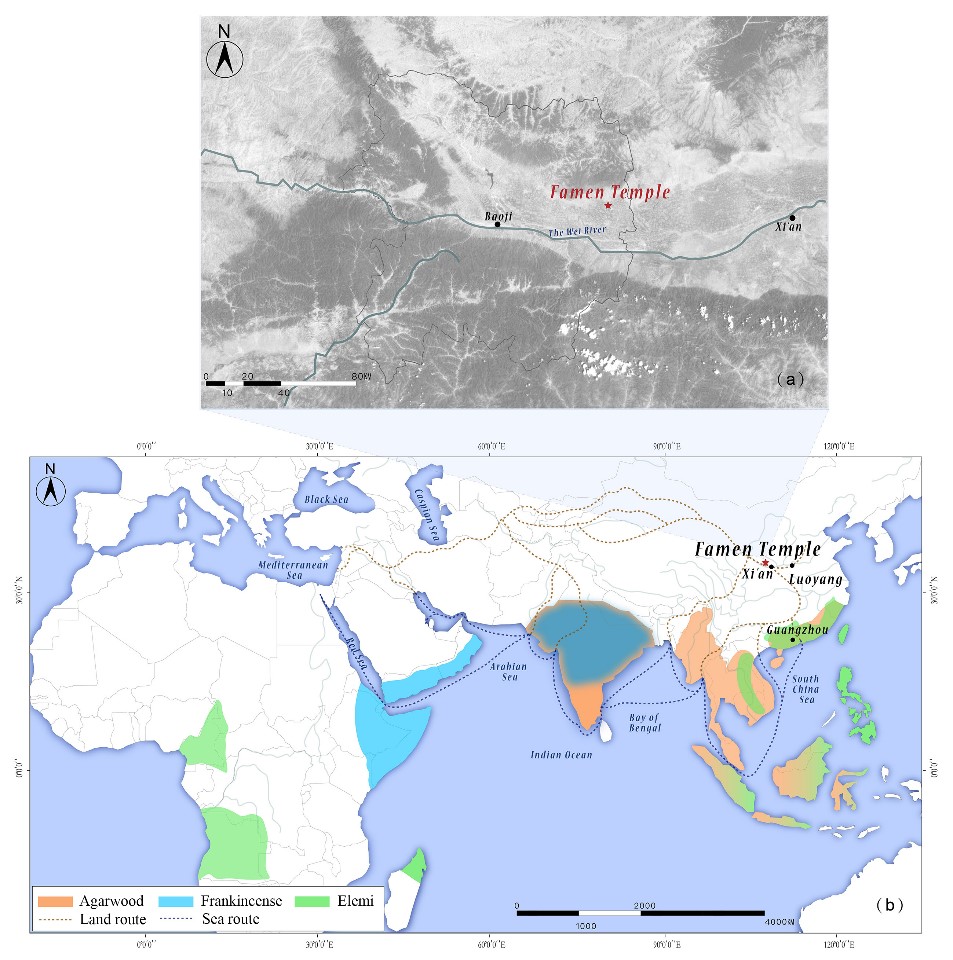Incense has been linked to ceremonies, religions, medicines, and cosmetics worldwide for thousands of years. Although many Chinese documents of the Tang Dynasty show that numerous exotic aromatic substances had been introduced into China, little archaeological evidence has been found, and little is known about their composition, origin, and function.
Famen Temple was a Buddhist pilgrimage center built to house the sacred finger bone sarira of Sakyamuni, the founder of Buddhism. The rulers of the Tang government advocated Buddhism, believing that the worship of Buddhist relics could produce great merit, thereby guaranteeing national security and a stable life for the people. Incense is indispensable in various Buddhist rituals and a lot of incense was consumed during the luxurious royal honoring ceremonies held by the Tang emperors to enshrine and worship the finger bone sarira.
The elaborate underground palace of Famen Temple was discovered in 1987. The last recorded and largest ceremony for venerating Buddha's sarira took place in CE 873 during the reign of Emperor Yizong who reigned from CE 859-873, and these magnificent objects mostly came from that royal ritual.
The three incense samples analyzed in this study were found in different containers in the back chamber of the underground palace. Yellow aromatic substances were found in the seventh container of the "Eight-nested Boxes," a set of sarira containers ritually used by Emperor Yizong. Scented wood pieces were found in a silver sarira container ritually used by the eminent Tantric monk Zhihuilun.
"The small begonia-shaped silver container was filled with brown fragrant powder, and pale-yellow particles can be observed in this sample, indicating that it may be a mixture of different materials," said Dr. REN Meng from the Palace Museum, first author of the study.
The researchers conducted a systematic analysis including Fourier transform infrared spectroscopy, gas chromatography/mass spectrometry, and pyrolysis gas chromatography/mass spectrometry on the incense samples and identified their composition.
The yellow aromatic resin inside the seventh of the "Eight-nested Boxes" was identified as elemi, providing the first evidence of elemi employed as incense associated with Buddhist rituals. The extremely high quality of these containers also shows the rarity and value of this fragrant resin in China over a thousand years ago.
Pieces of fragrant wood in the silver container provided by the Tantric monk in the late Tang period were found to be agarwood, which served an important role in sarira worship activities.
In addition, the aromatic powder stored in the begonia-shaped silver container was a mixture of agarwood and frankincense, revealing for the first time the main ingredients of Hexiang (blending of aromatics) in ancient China, as well as the contemporary knowledge of exotic incense.
"These incense samples are mainly extraterritorial or possibly from the southern periphery of China, and they were transported to the capital Chang'an and the Eastern capital Luoyang of the Tang Dynasty through the Land and/or Maritime Silk Road, shedding light on the incense trade and the function of incense in Buddhist worship practices during the Tang Dynasty," said Prof. YANG Yimin of UCAS, corresponding author of the study.








